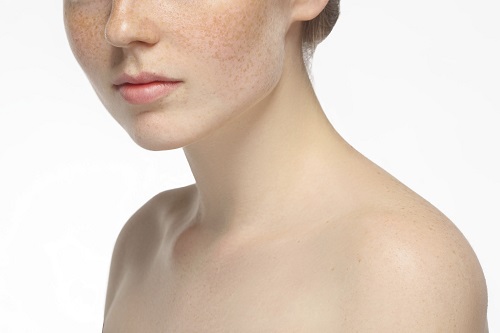Melanin is responsible for the color of your hair and skin. Too much of it can lead to hyperpigmentation. While this condition can be very obvious among Caucasians, Asians, Mediterranans and Africans are more prone to hyperpigmentation when overly exposed to the sun because of the huge amount of melanin in their skin.
A consultation with a skin care specialist will help you decide which hyperpigmentation treatment works best for your skin type and pigmentation problem.
What are the Causes of Pigmentation

Hyperpigmentation can manifest itself in various forms. Melasma occurs when hormones fluctuate, as in the case of “mask of pregnancy.” Thyroid disorders or taking birth control pills or hormone therapy medications can also lead to abnormal darkening of the skin – one factor why women are likelier to develop melasma than men. Treatment for melasma involves resolving first the underlying reason for its appearance (melasma often resolves on its own after pregnancy or termination of intake of birth control pills) and then treating the residual symptoms with appropriate topical or laser treatment.
A common and hereditary skin blemish, freckles (ephelides) can be an endearing facial feature, but not when they visibly stand out and number to hundreds of small, dark patches. Usually harmless, freckles can be aggravated by sun exposure, so broad spectrum sunscreen is a must to prevent further darkening.
Another adverse effect of too much exposure to sunlight is lentigo, commonly known as age or liver spots. They are called as such because they usually occur among the elderly as a result of ageing and years of sun exposure. A laser therapy at an aesthetic laser clinic can permanently eliminate these blemishes.
Hyperpigmentation may also result from post-inflammatory (PIH) injuries such as acne lesions, burns, psoriasis, friction and even harsh skin care products or aggressive skin care treatments. Because skin regenerates as a result of the injury, PIH often responds well to pigmentation treatment.
Non-Invasive Treatment Options for Pigmentation
Chemical peels can reduce the appearance of darkened skin and improve the overall look of the skin that may have been spoiled by the presence of scars, acne, age spots and freckles. A popular pigmentation treatment in Singapore, chemical peels allow the damaged, outer layer of the skin to fall off, leaving only newly formed skin that is smoother, less wrinkled and blemish-free.
A combination of professional skin care products and US FDA-approved procedures like diamond microdermabrasion and radiofrequency technology, such as those used in medical grade facials in aesthetic clinics in Singapore, delivers more than just the peeling benefits of chemical peels – wrinkles are reduced, sagging skin is tightened, and new collagen is produced.
Lastly, pulses of light can be applied to the skin to draw out dark spots to the topmost layer where they scab and fall off. Hyperpigmentation of various causes – liver spots, redness, acne scars – respond well to laser resurfacing. Laser clinics in Singapore have medical doctors certified and trained in laser therapy, and perform or closely supervise treatments to ensure maximum results and minimize side effects. Added benefits of laser therapy when done in a medical clinic in Singapore include smoothening uneven texture, diminishing fine lines, and zapping off tiny veins for that clearer and brighter glow.
- If you would like to be an informed patient, please contact us at +65-6801-4000 or
hello@cutislaserclinics.com. - Cutis Medical Laser Clinics, 9 Scotts Road Pacific Plaza, Scotts Medical Center #08-07, Singapore – 228210
+65-6801-4000 - hello@cutislaserclinics.com
